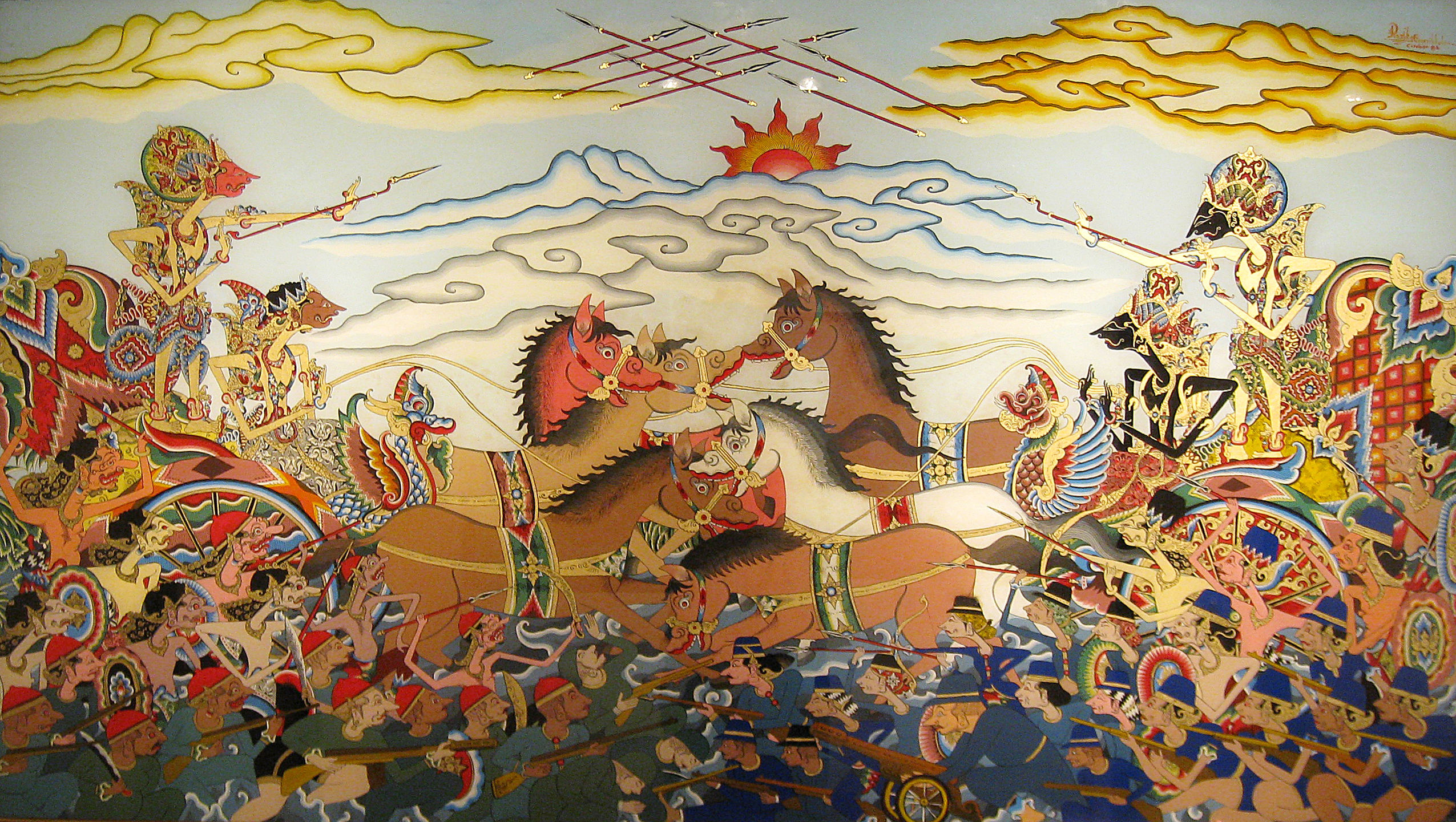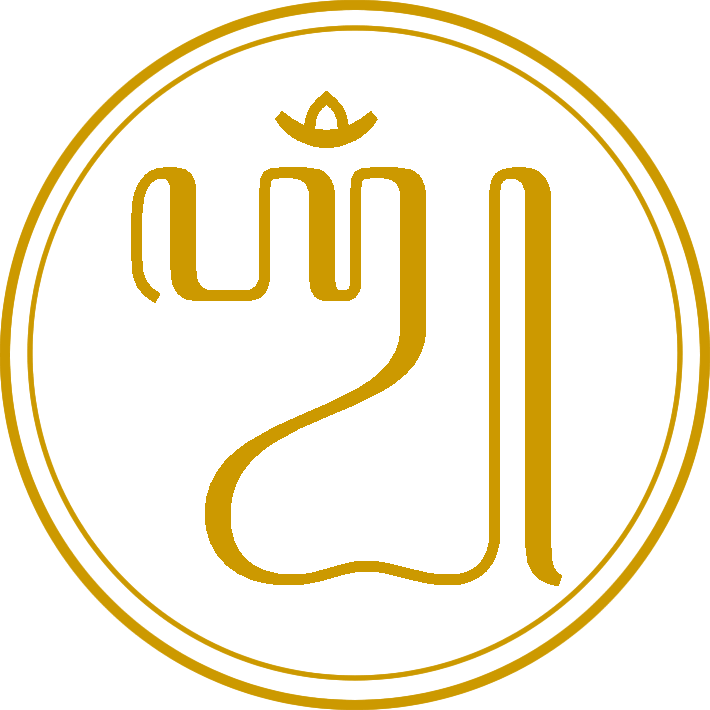|
Sangkuriang
Sangkuriang ( Sundanese: ) is a legend among Sundanese people in Indonesia. The legend tells about the creation of Lake Bandung, Mount Tangkuban Parahu, Mount Burangrang, and Mount Bukit Tunggul. The legend of Sangkuriang tells the story of a young man who falls in love with his mother, which is somewhat comparable to the Greek tragedy Oedipus. From the legend, we can determine how long the Sundanese have been living in Java island. Firmly supported by geological facts, it is predicted that the Sundanese have been living on Java Island since a thousand years BCE. The legend of Sangkuriang was almost certainly a story of oral tradition before being written down. The first written reference to the Sangkuriang legend appeared in the Bujangga Manik manuscript written on palm leaves at the end of the 15th century or the early 16th century AD. Prince Jaya Pakuan, alias Prince Bujangga Manik or Prince Ameng Layaran, visited all of the sacred Hindu sites in Java island and Bali is ... [...More Info...] [...Related Items...] OR: [Wikipedia] [Google] [Baidu] |
Tangkuban Parahu
Tangkuban Perahu () is a stratovolcano in Lembang, West Bandung Regency, West Java, Indonesia. It erupted in 1826, 1829, 1842, 1846, 1896, 1910, 1926, 1929, 1952, 1957, 1961, 1965, 1967, 1969, 1983, 2013 and 2019. It is a popular tourist attraction where tourists hike or ride to the edge of the crater to view the hot water springs and boiling mud up close, and buy eggs cooked on the hot surface. Together with Mount Burangrang and Bukit Tunggul, it is a remnant of the ancient Mount Sunda after the plinian eruption caused the Caldera to collapse. In April 2005, the Directorate of Volcanology and Geological Hazard Mitigation raised an alert, forbidding visitors from going up the volcano. "Sensors on the slopes of the two mountains - Anak Krakatoa on the southern tip of Sumatra Island and Tangkuban Perahu in Java - picked up an increase in volcanic activity and a build-up of gases, said government volcanologist Syamsul Rizal." On the mountain's northern flank is Death Valley, whic ... [...More Info...] [...Related Items...] OR: [Wikipedia] [Google] [Baidu] |
Sundanese People
The Sundanese (; ) are an Austronesian people, Austronesian ethnic group native to Java in Indonesia, primarily West Java. They number approximately 42 million and form Ethnic groups in Indonesia, Indonesia's second most populous ethnic group. They speak the Sundanese language, which is part of the Austronesian languages. The western area of the island of Java, namely the provinces of West Java, Banten, and Jakarta, as well as the westernmost part of Central Java, is called by the Sundanese people ''Tatar Sunda'' or ''Pasundan'' (meaning Sundanese land). Sundanese migrants can also be found in Lampung, South Sumatra, and, to a lesser extent, in Central Java and East Java. The Sundanese people can also be found on several other islands in Indonesia such as Sumatra, Kalimantan, Sulawesi, Bali and Papua (province), Papua. Origins Migration theories The Sundanese are of Austronesian peoples, Austronesian origins and are thought to have originated in Taiwan. They migrated through th ... [...More Info...] [...Related Items...] OR: [Wikipedia] [Google] [Baidu] |
Lake Bandung
Lake Bandung () was a prehistoric lake located in and around the city of Bandung, Parahyangan highlands, West Java, Indonesia. believed to exist between 126,000 and 20,000 BCE in the Pleistocene due to the violent eruption of Mount Sunda that blocked the Citarum River, causing the lowlands to begin to be inundated with water, eventually forming a lake. Today, the lake had dried out and revealed the bottom of a geological basin known as the Bandung basin. It is mostly filled with habitation and industrial areas, paddy fields and orchards. It is believed that this low-lying basin has caused the southern suburbs of Bandung to suffer seasonal flooding during the rainy season, as the Citarum river that formed the lowermost backbone of the basin overwhelms and swells. Formation Miocene period During the Miocene period, the northern Bandung area was a sea, as evidenced by coral fossils that formed a coral reef along the Rajamandala ridge. Today, these reefs are limestone and mined ... [...More Info...] [...Related Items...] OR: [Wikipedia] [Google] [Baidu] |
Sundanese Mythology
The mythology of Indonesia is very diverse, the Indonesian people consisting of hundreds of ethnic groups, each with their own myths and legends that explain the origin of their people, the tales of their ancestors and the demons or deities in their belief systems. The tendency to syncretize by overlying older traditions with newer foreign ideas has occurred. For example, the older ancestral mythology might be merged with foreign mythology, such as Hindu, Islam, or Christian biblical mythology. Foreign influences Some native Indonesian ethnic groups that were isolated from the rest of the world until recent centuries have their own native myths and gods. These native mythologies are relatively free from foreign influences, such as Torajans, Nias, Bataks, Dayaks and Papuans. By contrast, Javanese, Balinese and Sundanese were influenced by Hindu-Buddhist Indian mythology as early as the 1st century CE. Hindu gods, legends and epics such as ''Ramayana'' and ''Mahabharata'' ... [...More Info...] [...Related Items...] OR: [Wikipedia] [Google] [Baidu] |
Sundanese Script
Standard Sundanese script (''Aksara Sunda Baku'', ) is a traditional writing system used by Sundanese people to write Sundanese language. It is built based on Old Sundanese script (''Aksara Sunda Kuno'') which was used from the 14th to the 18th centuries. History Old Sundanese was developed based on the Pallava script of India, and was used from the 14th until the 18th centuries. The last manuscript written in Old Sundanese script was ''Carita Waruga Guru.'' From the 17th to the 19th centuries, Sundanese was mostly spoken and not written. Javanese script, Javanese and Pegon script, Pegon scripts were used to write Sundanese during this period. In 1996, the government of West Java announced a plan to introduce an official Sundanese script, and in October 1997, the Old Sundanese script was chosen and renamed to ''Aksara Sunda.'' Typology The standardized script has 32 basic characters-- seven vowels, 23 consonants, and thirteen phonetic diacriticals (). There are also numerals ... [...More Info...] [...Related Items...] OR: [Wikipedia] [Google] [Baidu] |
Svarga
Svarga (, ), also known as Swarga, Indraloka and Svargaloka, is the celestial abode of the devas in Hinduism. Svarga is one of the seven higher lokas ( esoteric planes) in Hindu cosmology. Svarga is often translated as heaven, though it is regarded to be dissimilar to the concept of the Abrahamic Heaven. Description Svarga is a set of celestial worlds located on and above Mount Meru, where those who had led righteous lives by adhering to the scriptures delight in pleasures, before their next birth on earth. It is described to have been built by the deity Tvashtar, the Vedic architect of the devas. The king of the devas, Indra, is the ruler of Svarga, ruling it with his consort, Indrani. His palace in the abode is called Vaijayanta. This palace holds the famous hall, Sudharma, unrivalled among all the princely courts. The capital of Svarga is Amaravati, and its entrance is guarded by the legendary elephant, Airavata. Svarga is described to be the home of Kamadhenu, the c ... [...More Info...] [...Related Items...] OR: [Wikipedia] [Google] [Baidu] |
Sundanese Folklore
Sundanese may refer to: * Sundanese people * Sundanese language * Sundanese script * Sundanese (Unicode block) Sundanese is a Unicode block containing modern characters for writing the Sundanese script of the Sundanese language of the island of Java, Indonesia. History The following Unicode-related documents record the purpose and process of defining s ... See also * * Sunda (other) {{disambig Language and nationality disambiguation pages ... [...More Info...] [...Related Items...] OR: [Wikipedia] [Google] [Baidu] |
Mount Sunda
Mount Sunda was an ancient volcano that once stood in Priangan highlands in today's West Java province, Java island, Indonesia. The Sunda volcano existed during the Pleistocene age before a violent Plinian eruption caused its summit to collapse. The volcano formed the northern ridge of the Bandung Basin. The ancient volcano is the predecessor of today's Tangkuban Perahu, Burangrang, and Bukit Tunggul volcanoes. The Sunda volcano was a stratovolcano and is estimated to have reached up to 3,000–4,000 metres (9,850–13,100 ft) above sea level during the Pleistocene age. During this age, it was one of the highest volcanoes in Java. Eruptions Two large-scale eruptions took place; the first formed the northern ridge of the Bandung basin, and the other (est. 55,000 Before the Present) blocked the Citarum River, turning the basin into a lake known as the " Great Prehistoric Lake of Bandung". Naming The mountain's name comes from the Sanskrit "Chuda" which means white, refe ... [...More Info...] [...Related Items...] OR: [Wikipedia] [Google] [Baidu] |
Hyang
''Hyang'' (Kawi language, Kawi, Sundanese language, Sundanese, Javanese language, Javanese, and Balinese language, Balinese) is a representation of the King of the gods, supreme being, in ancient Mythology of Indonesia, Java and Bali mythology. The spiritual entity can be either considered Divinity, divine or ancestral. The reverence for this spiritual entity can be found in the folk religions of Java and Bali, such as the Sunda Wiwitan ( Sundanism or Cigugur Sundanism), Kejawen ( non-monotheistic Javanism), Kapitayan ( monotheistic Javanism), and Balinese Hinduism, Gama Tirta ( Balinism). The realm where ''Hyang'' resides is called the ''Kahyangan'', which is an Old Javanese term that means "the abode of ''Hyang''", "part of ''Hyang''", or "heaven". The Old Sundanese language, Old Sundanese manuscript Sanghyang Siksa Kandang Karesian, has stated that ''Hyang'' can be interpreted as "Omnipotence". Similarly, in the highest Sunda Wiwitan Spirituality, ''Hyang'' is also referred to ... [...More Info...] [...Related Items...] OR: [Wikipedia] [Google] [Baidu] |
Pencak Silat
Pencak silat (; in Western writings sometimes spelled "pentjak silat" or phonetically as "penchak silat") is a class of related Indonesian martial arts. In neighbouring countries, the term usually refers to professional competitive silat. It is a full-body fighting form incorporating strikes, grappling, and throwing, in addition to weaponry. Every part of the body is used and subject to attack. Pencak silat was practiced not only for physical defense but also for psychological ends. There are hundreds of different pencak silat styles () and schools () which tend to focus either on strikes, joint manipulation, weaponry, or some combination thereof. The International Pencak Silat Federation (IPSF), or PERSILAT (''Persekutuan Pencak Silat Antarabangsa''), is the international pencak silat governing organization and the only pencak silat organisation recognised by the Olympic Council of Asia. The organisation was established on 11 March 1980, in Jakarta and consisted of the nati ... [...More Info...] [...Related Items...] OR: [Wikipedia] [Google] [Baidu] |
Bamboo
Bamboos are a diverse group of mostly evergreen perennial plant, perennial flowering plants making up the subfamily (biology), subfamily Bambusoideae of the grass family Poaceae. Giant bamboos are the largest members of the grass family, in the case of ''Dendrocalamus sinicus'' having individual stalks (Culm (botany), culms) reaching a length of , up to in thickness and a weight of up to . The internodes of bamboos can also be of great length. ''Kinabaluchloa, Kinabaluchloa wrayi'' has internodes up to in length. and ''Arthrostylidium schomburgkii'' has internodes up to in length, exceeded in length only by Cyperus papyrus, papyrus. By contrast, the stalks of the tiny bamboo Raddiella, ''Raddiella vanessiae'' of the savannas of French Guiana measure only in length by about in width. The origin of the word "bamboo" is uncertain, but it most likely comes from the Dutch language, Dutch or Portuguese language, Portuguese language, which originally borrowed it from Malay langua ... [...More Info...] [...Related Items...] OR: [Wikipedia] [Google] [Baidu] |






